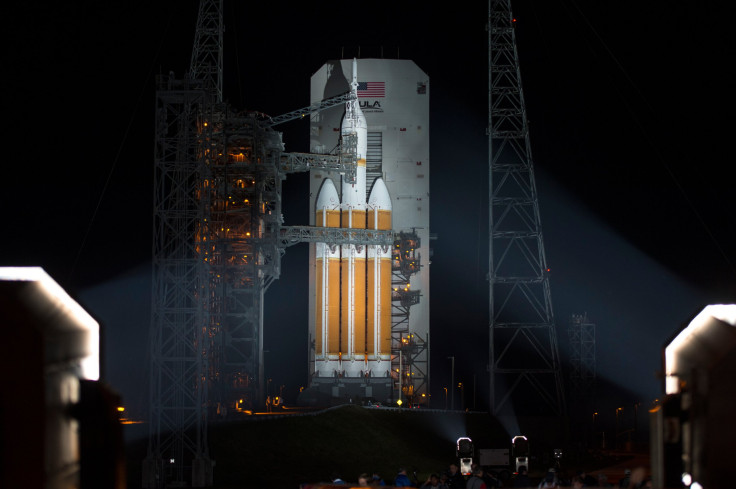NASA 2015 Budget: Europa Mission, Orion Big Winners As Space Agency Receives An Extra $500M

The U.S. House of Representatives passed a $1.1 trillion federal budget bill Thursday, with NASA receiving $500 million more than the White House requested for the 2015 fiscal year. The Senate may vote on its budget bill Monday. Under the House version, none of the space agency’s programs would be cut, and its $18 billion budget encompasses a 9.39 percent increase for its science mission -- including $160 million more than requested for planetary sciences -- the American Association for the Advancement of Science reported.
In March, President Barack Obama requested a $17.5 billion budget for NASA for the 2015 fiscal year. In the request, $4.79 billion was set aside for the Science Mission Directorate, with $1.28 billion dedicated to planetary sciences. As part of the House-approved budget, NASA would receive $5.24 billion for the Science Mission Directorate and $1.44 billion for planetary sciences.
“Any increase in funding for NASA is good for our nation’s future in space. The 2015 budget does seems to reflect public sentiment about NASA, which is perennially positive, and some degree of politics in advance of the 2016 elections,” Mason Peck, an associate professor at Cornell University and former NASA chief technologist, told International Business Times.
The $1.44 billion reserved for planetary sciences is an increase from the $1.35 billion NASA received in 2014 and slightly lower than the $1.50 billion it received in 2012. The planetary-sciences budget includes at least $100 million dedicated to a mission to Europa, Jupiter’s icy moon, which may have an ocean underneath its surface, AAAS reported.
U.S. Rep. Adam Schiff, D-Calif., stressed the importance of a mission to Europa during an interview with IBTimes in March. Schiff is a member of the House Appropriations Subcommittee on Commerce, Justice and Science, which oversees NASA’s budget. “Europa, consistently with the Mars sample return, is among the highest priorities of the decadal survey [a report prepared by the National Academy of Sciences detailing the priorities of various science missions],” Schiff said. “So, it’s not merely what I think the scientific benefits would be, although I think they would be very considerable, but what the scientific community thinks would be the highest priority.”
NASA’s budget includes plenty of funding for the Orion spacecraft and the next-generation Space Launch System, or SLS. Orion completed its first test flight atop a Delta IV heavy rocket Dec. 5, but future missions will see the SLS launching the multipurpose vehicle into space. Of the $4.4 billion reserved for exploration, at least $1.2 billion will be used for Orion, while $2.1 billion will be set aside for the development of the SLS. As noted in the budget, the SLS will have a launch capability of at least 130 metric tons.
NASA awarded the Boeing Co. and the privately held SpaceX contracts as part of the Commercial Crew Program in September. The two companies are developing spacecraft that will transport astronauts to the International Space Station and return manned launches to the U.S. by 2017. The space agency budget for the 2015 fiscal year sets aside $805 million for commercial spaceflight activity.
While the budget increase appears to be a huge victory for NASA, there are some concerns the budget is not enough to fund projects that are part of the space agency’s “Next Giant Leap.” NASA has plans for an asteroid redirect mission in the 2020s and a manned mission to Mars in the 2030s.
“In supporting big projects like SLS and Orion, Congress has helped ensure these important near-term projects will be successful, but at the same time they have failed to invest adequately in NASA’s long-term future,” Cornell’s Peck said. “Specifically, Congress continues to underfund the Space Technology Mission Directorate, which is where the agency invests in the much-needed technologies.”
Peck added that this funding could go toward the exploration of “exoplanets and asteroids, and create the game-changing innovations that have historically paid back taxpayer dollars many times over when they spin off into commercial products for American companies.”
© Copyright IBTimes 2024. All rights reserved.





















